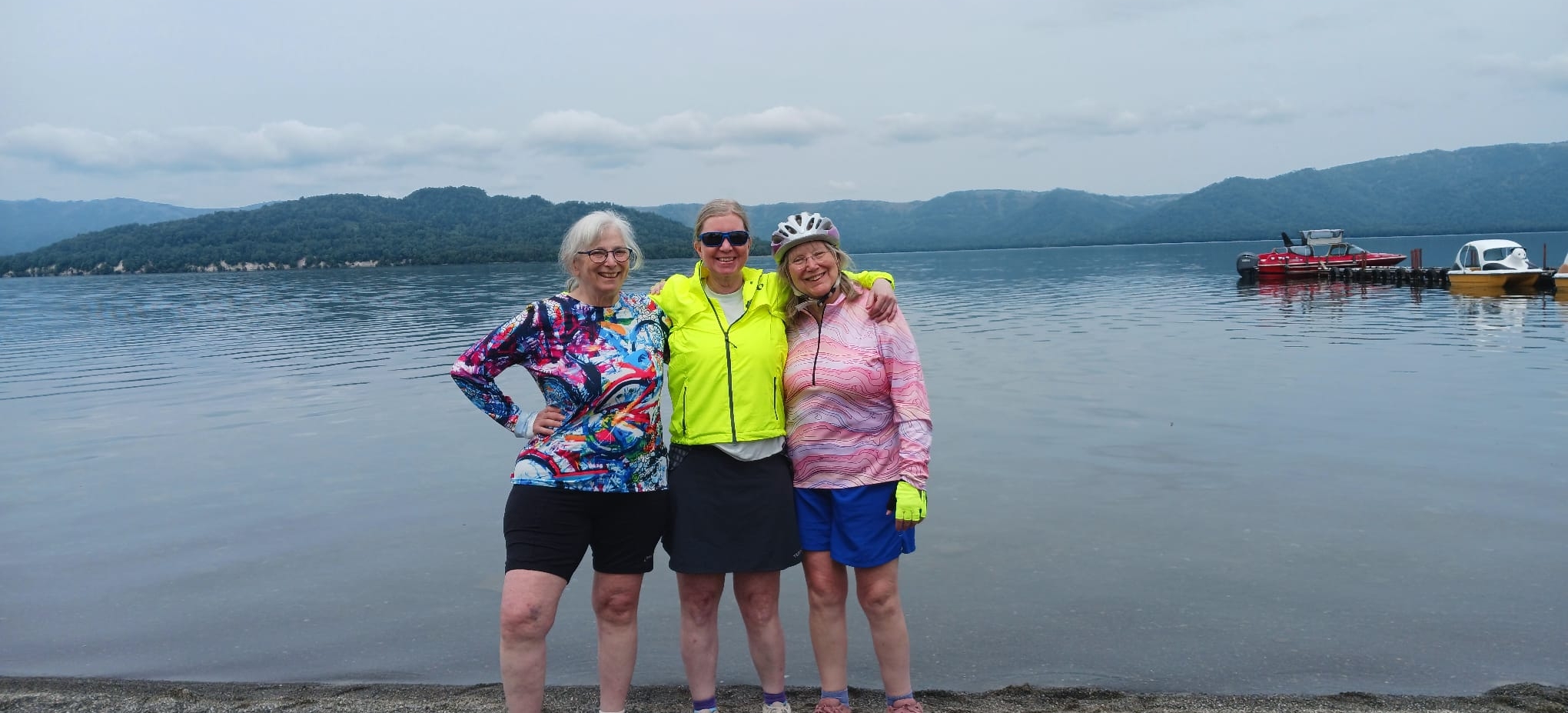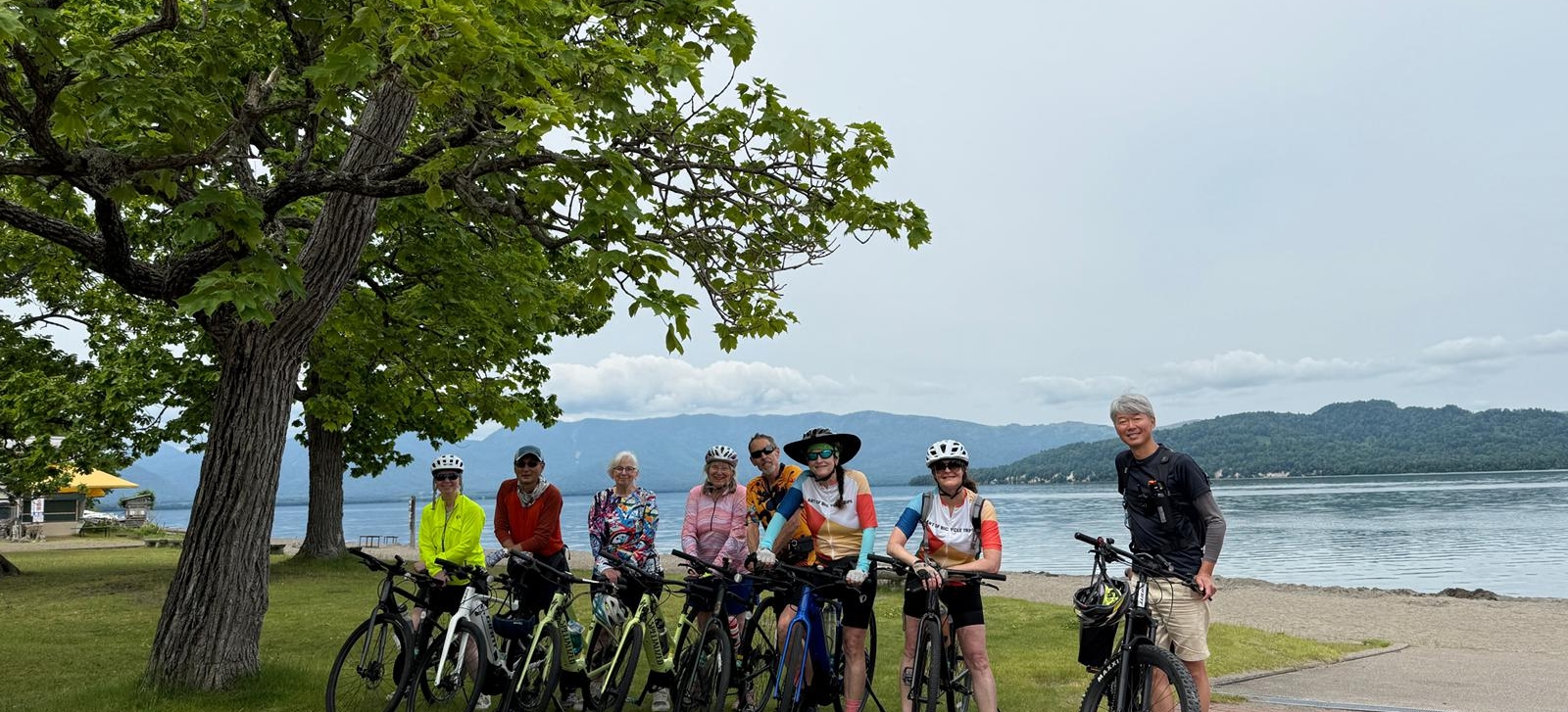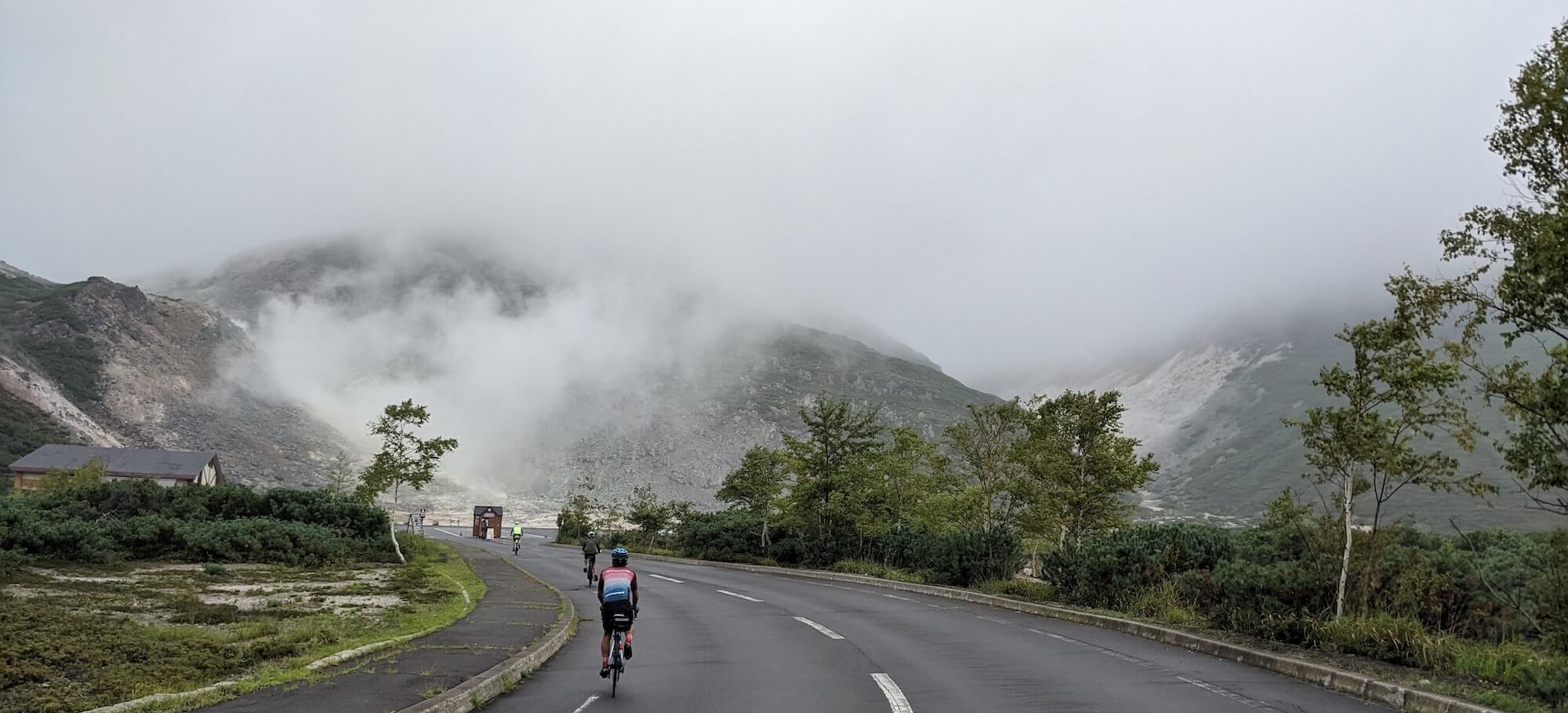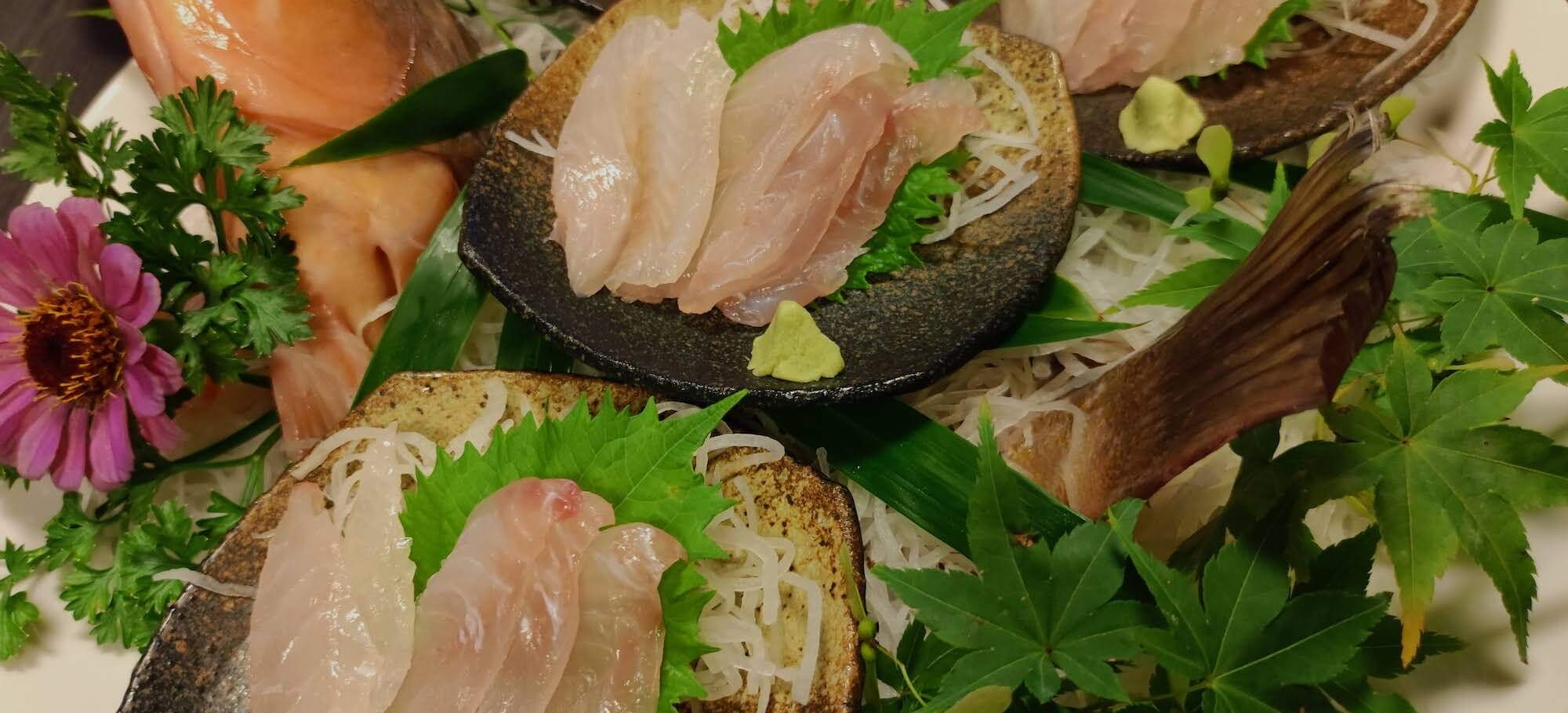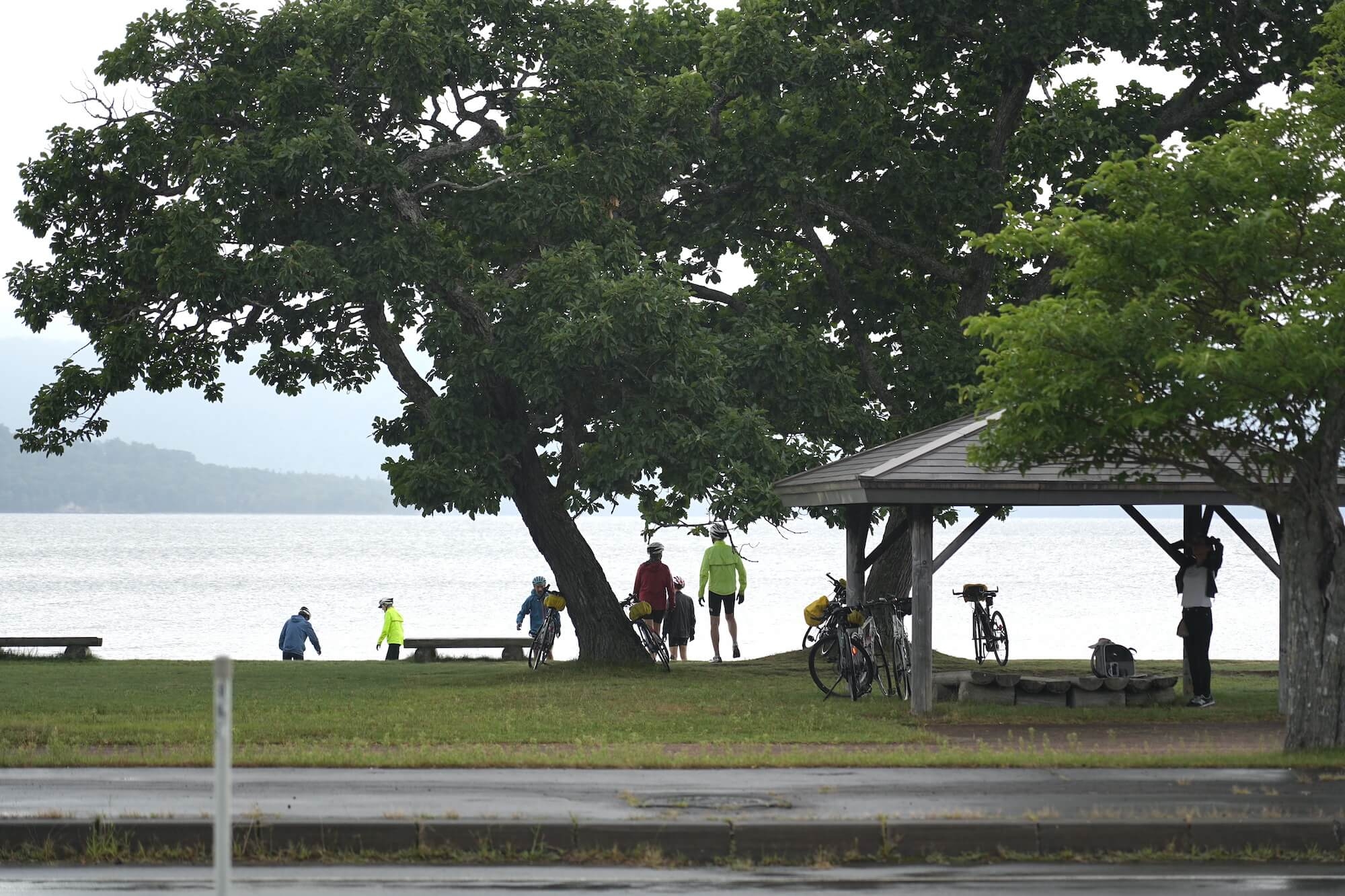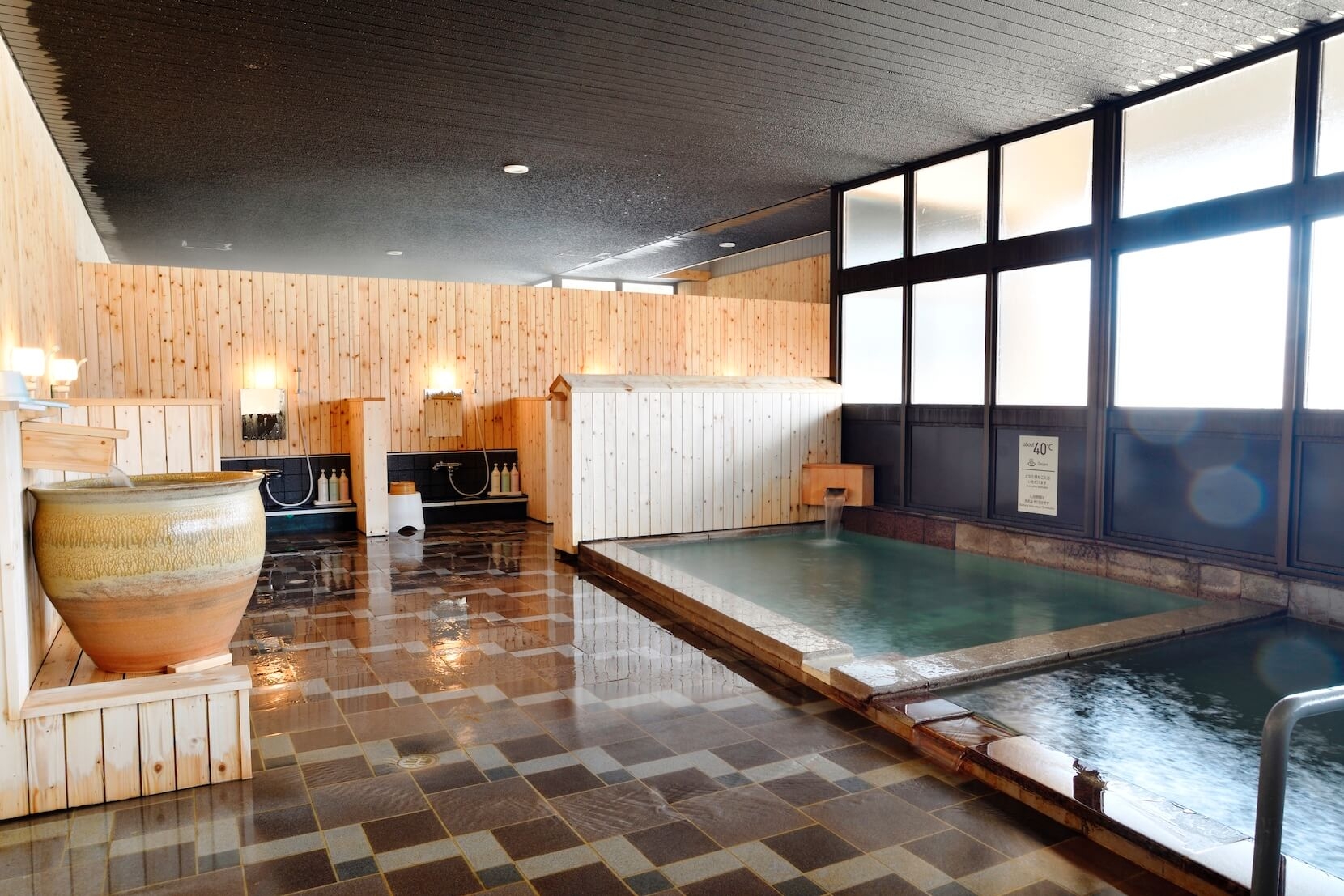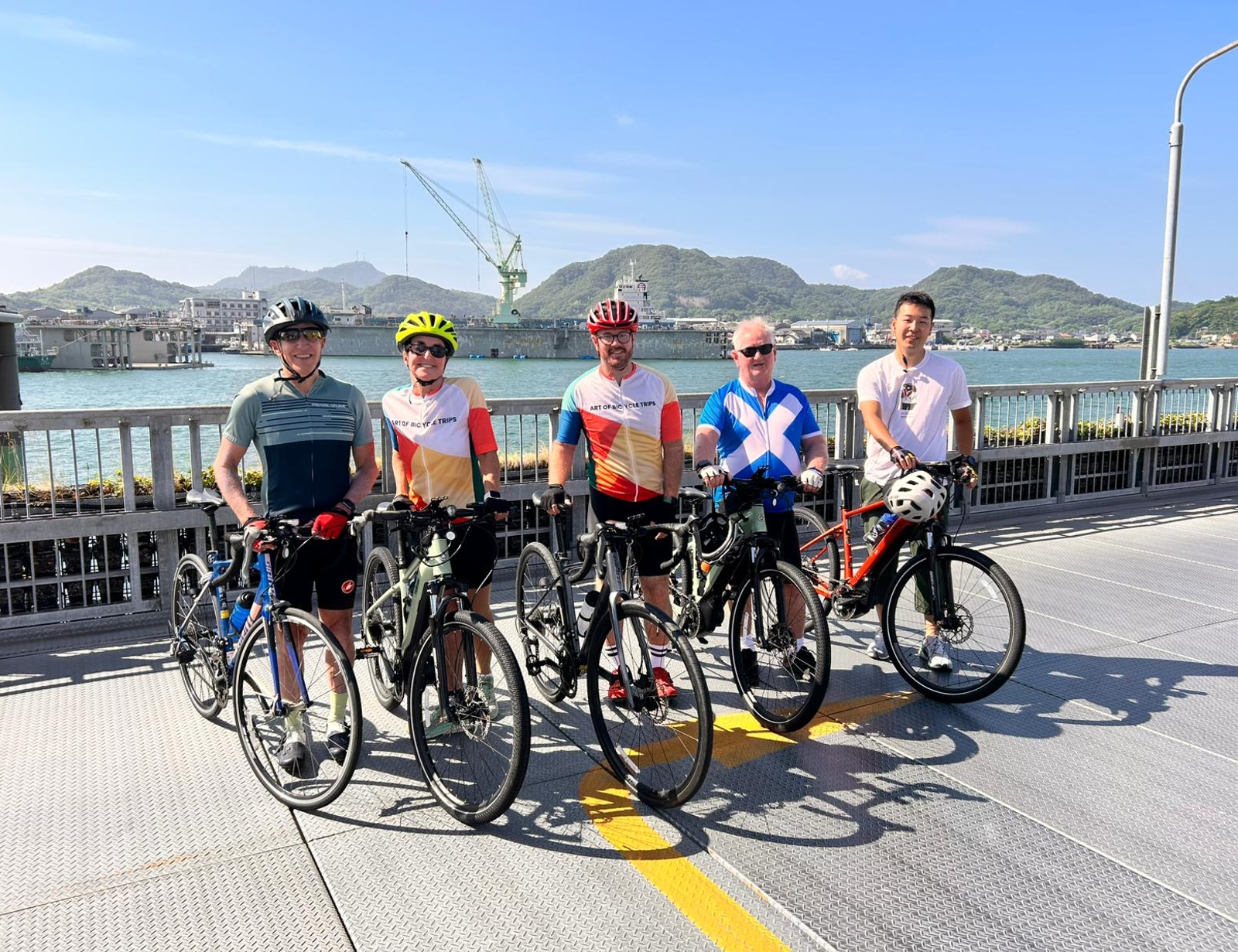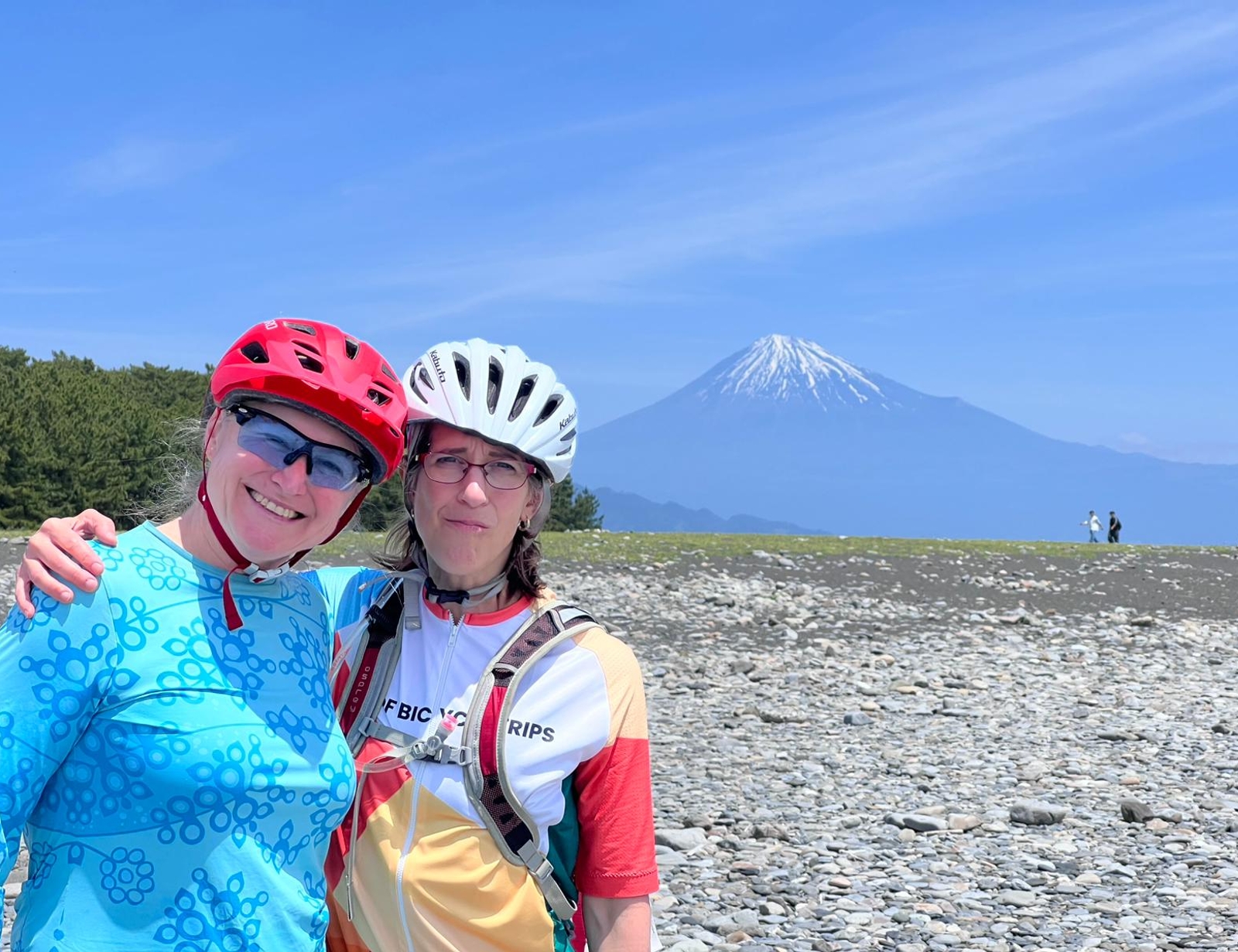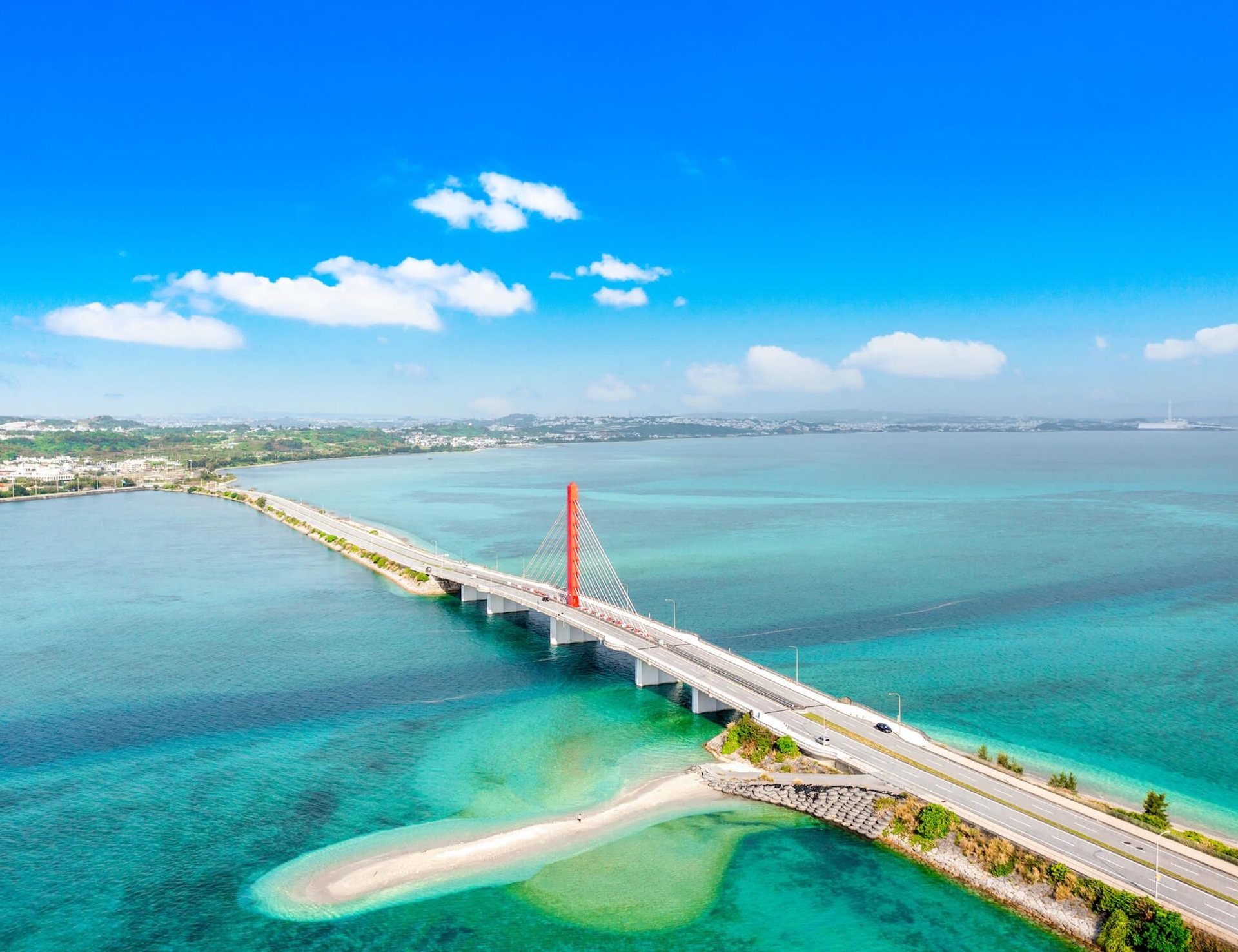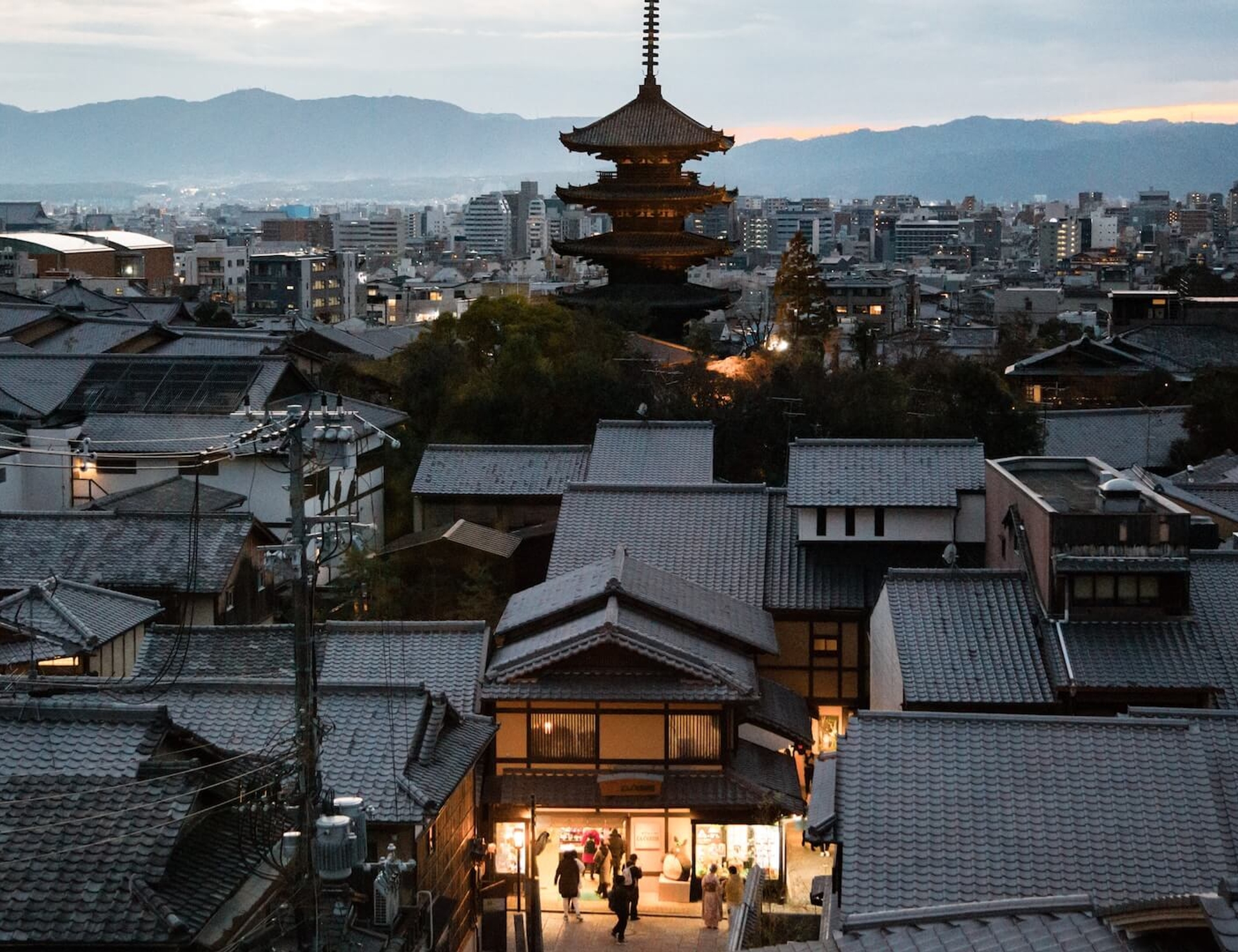8 days
From US $4,795
Off-Beat Eastern Hokkaido Bike Tour
There’s a lot more to Japan than just cherry blossoms, pagodas, and picture-postcard views of Mount Fuji towering over metropolitan Tokyo. This off-beat Hokkaido bike tour takes us far away from the trodden path of tourist traps and into the untouched wilderness of Hokkaido, Japan’s northernmost island.
Situated along the border with Russia, Hokkaido is home to virgin Taiga forests, snow-covered volcanoes, caldera lakes formed due to volcanic eruptions, and a beautiful coastline along the northern Pacific Ocean.
The tour goes in a loop through natural forests and lakes in the Akan–Mashu national parks and Shiretoko national park, starting from Lake Abashiri — famed for sunniest place on Hokkaido’s eastern coast — before cycling into Hokkaido’s wilderness, taking riders past thickly forested mountains, picturesque caldera lakes, rugged volcanic lakes, hot springs, quaint fishing villages, and circling back Abashiri.
Over eight days, cyclists journey through picturesque landscapes, from the coastal beauty of Abashiri to the tranquil hot springs of Yoroushi Onsen and Akanko Onsen. Along the way, delve into the rich history and traditions of the Ainu people at the Museum of Northern Peoples, pedal along the stunning Okhotsk coastline, and conquer challenging ascents for breathtaking panoramic views. Explore UNESCO-listed sites like the Shiretoko Peninsula, encounter wildlife in their natural habitats, and relax in rejuvenating onsen baths amidst serene surroundings.
Memanbetsu Airport, Abashiri | 10:00hrs
Abashiri | 12:00hrs
casual hotels
moderate to challenging
60km/37mi
6
Memanbetsu Airport (MMB)
Memanbetsu Airport (MMB)
Min. 6, Max. 10
Highlights
Itinerary
Brief Itinerary
Meals are indicated as B = Breakfast, L = Lunch, D = Dinner.
Listed hotels are subject to availability and may be replaced with similar alternatives of equal standard.
| Day | Place | casual Inns | Meals | Distance | Activity |
|---|---|---|---|---|---|
| DAY 1 | Abashiri | Abashiri Kanko Hotel (Ryokan) | D | 36km / 22mi | cycling |
| DAY 2 | Utoro | Shiretoko Village (Onsen) | B,D | 88km / 55mi | cycling |
| DAY 3 | Rausu | Shiretoko Sarai | B,D | 37km / 23mi | cycling |
| DAY 4 | Yoroushi Onsen | Yuyato Daiichi | B,D | 88km / 55mi | cycling |
| DAY 5 | Yoroushi Onsen | Yuyato Daiichi | B,D | ||
| DAY 6 | Kawayu Onsen | Oyado Kinkiyu | B,D | 62km / 38mi | cycling |
| DAY 7 | Akanko Onsen | Akan Yuku no Sato Tsuruga | B,D | 70km / 42mi | cycling |
| DAY 8 | Abashiri | B |
Detailed Itinerary
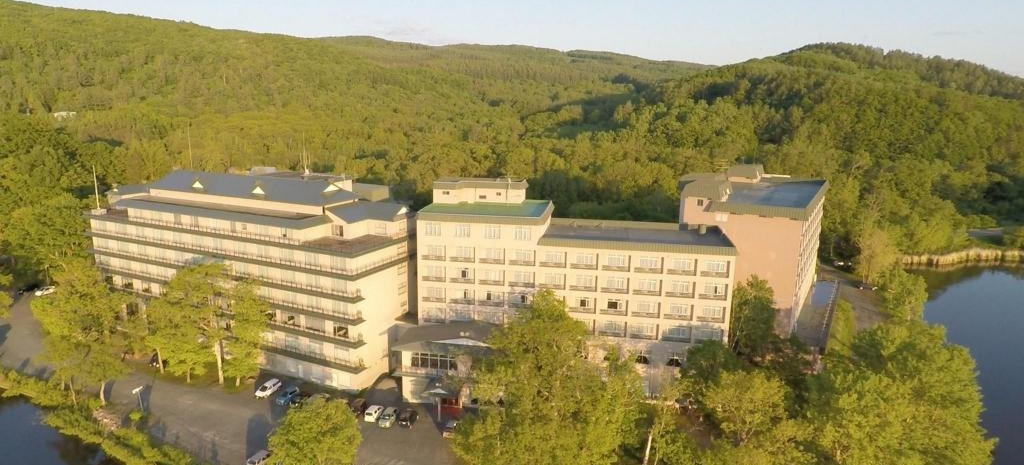
Day 1: Abashiri
We meet at the Memanbetsu Airport (Abashiri), to start our cycling tour in Hokkaido. Abashiri is situated on the coast of the Sea of Okhotsk, and is surrounded by beautiful natural landscapes, including the Sea of Okhotsk, Lake Abashiri, and the Shiretoko Peninsula.
We start our day with a visit to The Museum of Northern Peoples. This museum is dedicated to showcasing the cultures, traditions, and history of the indigenous peoples of the northern regions, with a particular focus on the Ainu people, giving us a perfect introduction to Eastern Hokkaido.
Post-museum visit, we have lunch then head to the Tokoro shrine.
After visiting the shrine, we do a bike fit, followed by a short, leisurely ride along the picturesque shores of Lake Abashiri and Lake Notoro. These serene lakes offer stunning vistas and a chance to immerse oneself in the tranquil surroundings of Eastern Hokkaido.
While in Abashiri, we stay at a lakeside hotel that has natural hot springs, called onsen in Japanese, on its grounds. Once we’ve relaxed after soaking in the rejuvenating waters of the onsen, we have dinner together to say Kanpai! to the start of a wonderful adventure. In case you didn’t know, Kanpai is Japanese for Cheers.
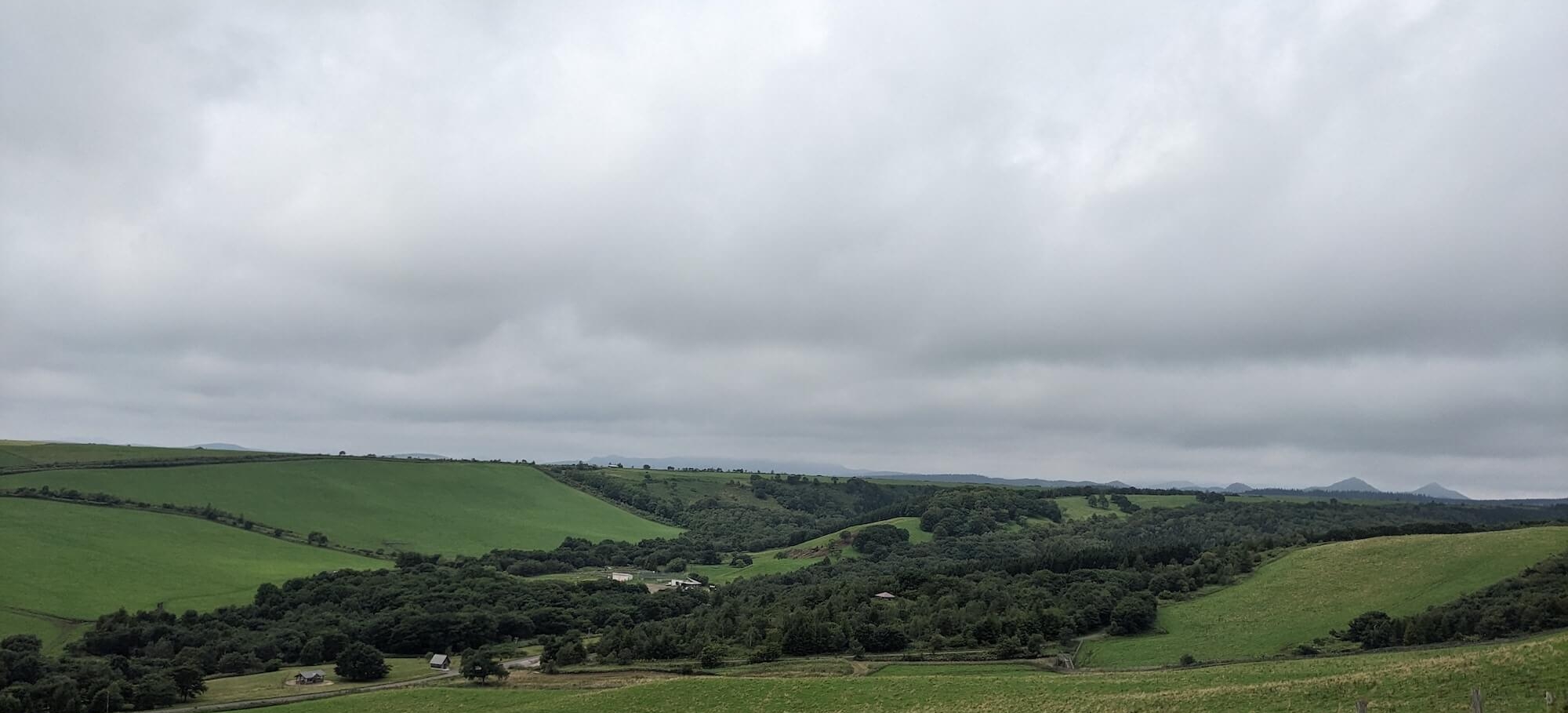
Day 2: Utoro
We bike along the Okhotsk coastline, getting some excellent views of the sea from vantage points and through rolling hills and on a road popularly know as Road to Heaven. Sugar beet, potato, wheat, corn, and barley fields dot the landscape in the area.
We have a stopover for lunch before moving onwards to Shiretoko. Here we have the opportunity to explore the remarkable Shiretoko Peninsula, a designated UNESCO World Heritage Site, celebrated for its untouched wilderness, diverse ecosystems, and extraordinary biodiversity.
Stay tonight is a traditional Japanese style onsen with communal bathrooms and toilets.

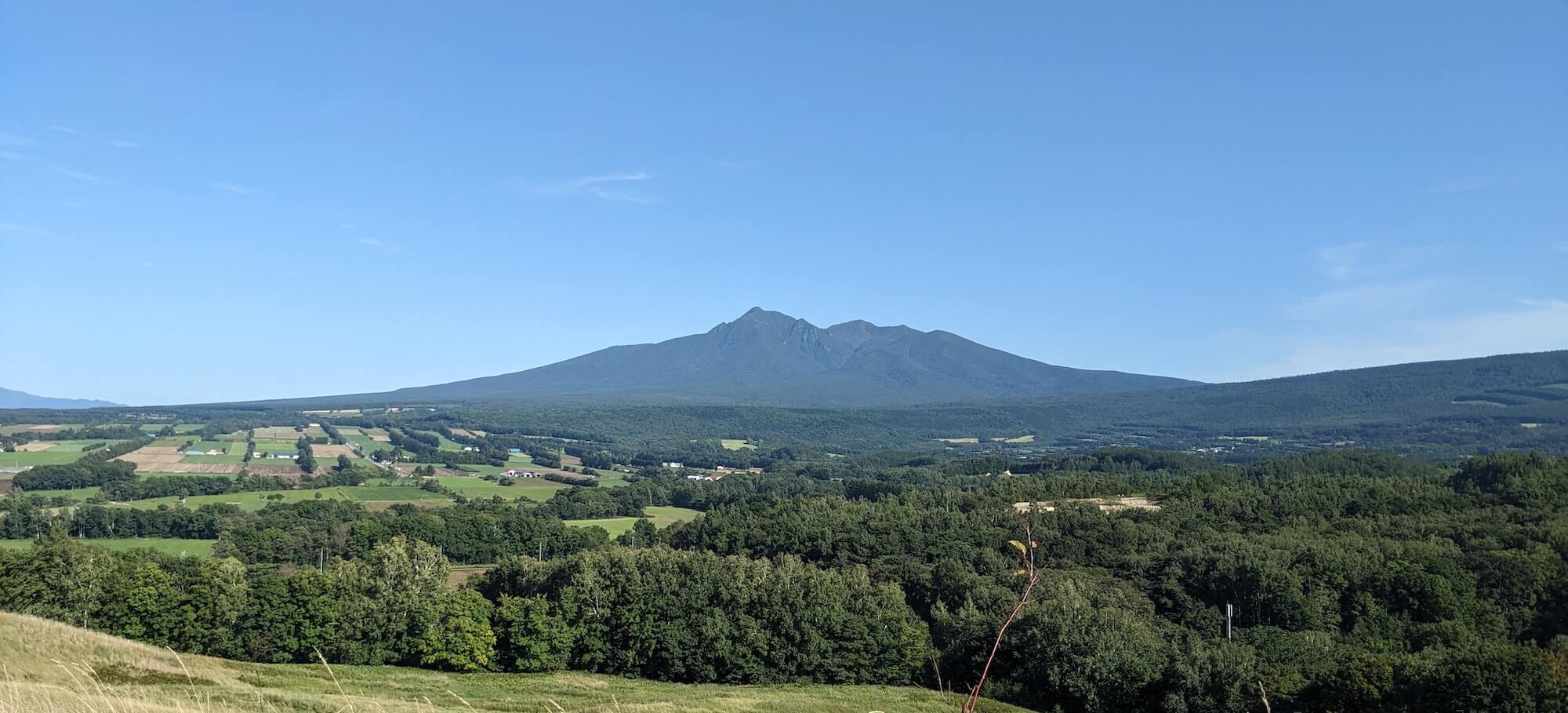
Day 3: Rausu
In the early morning, we go on a scenic Shiretoko Five Lakes hike. Be on the look out for Brown Bear as we may have the chance to observe these majestic creatures in their natural habitat.
Later, our cycling day begins with an invigorating challenge: a demanding ascent to a Shiretoko pass with a substantial 700-meter elevation gain. The climb may be strenuous, but the effort is well worth it. At the summit, you'll be rewarded with breathtaking panoramic views of the surrounding landscapes.
As we conquer the pass, the real thrill begins. A thrilling downhill descent awaits, leading us to Rausu, our stop for the night facing Kunashiri Island.
The waters near Rausu are teeming with marine life, making it a popular spot for whale-watching and dolphin-watching tours. Rausu is famous for its kelp forests, which are ecologically vital and serve as a habitat for various marine species. The local kelp, known as "Rausu kombu," is highly regarded for its culinary uses and is often used in Japanese cuisine.
Our hotel for the night has a communal bathroom with private toilets.

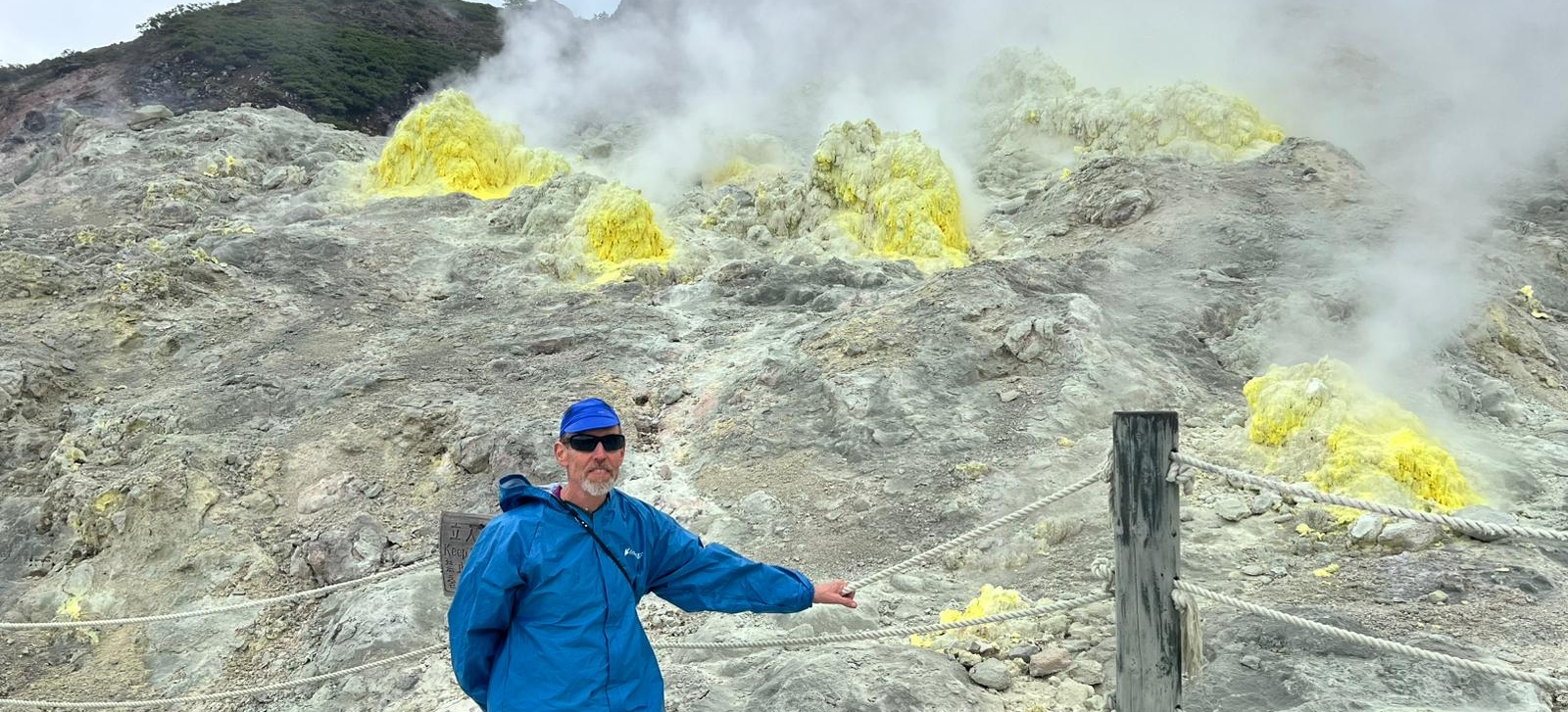
Day 4: Yoroushi Onsen
We head south from Rausu along the Sea of Okhotsk which separates Japan from Russia. Okhotsk is recognized as having some of the richest biological resources in the world and is renowned for its abundant biological resources, making it a hotspot for salmon fishing enthusiasts.
We bike along the coast, passing by quaint fishermen’s villages. After 25km ride, the route turns inland area and runs through farmlands area until we reach Yoroushi Onsen.
Nestled in the scenic landscape, Yoroushi Onsen awaits, offering a serene retreat with its rejuvenating hot springs, providing a perfect opportunity to unwind and soak in the tranquility after a day of exhilarating cycling.
Our hotel for the night has a communal bathroom with private toilets.

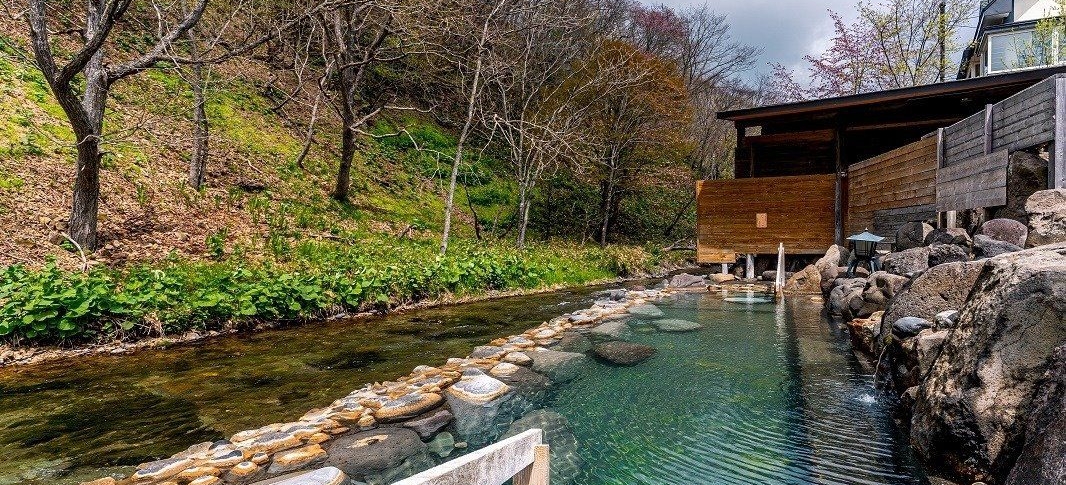
Day 5: Yoroushi Onsen
Today spend the day at leisure. Yoroushi onsen has picture-perfect setting and is situated right at the edge of river and forest. Here take time to observe wild birds and animals.
This is a good place for spotting the famous Blakiston’s Fish Owl, the largest owl species in the world, so keep your eyes and ears open to any calls of To Whit and To Who!
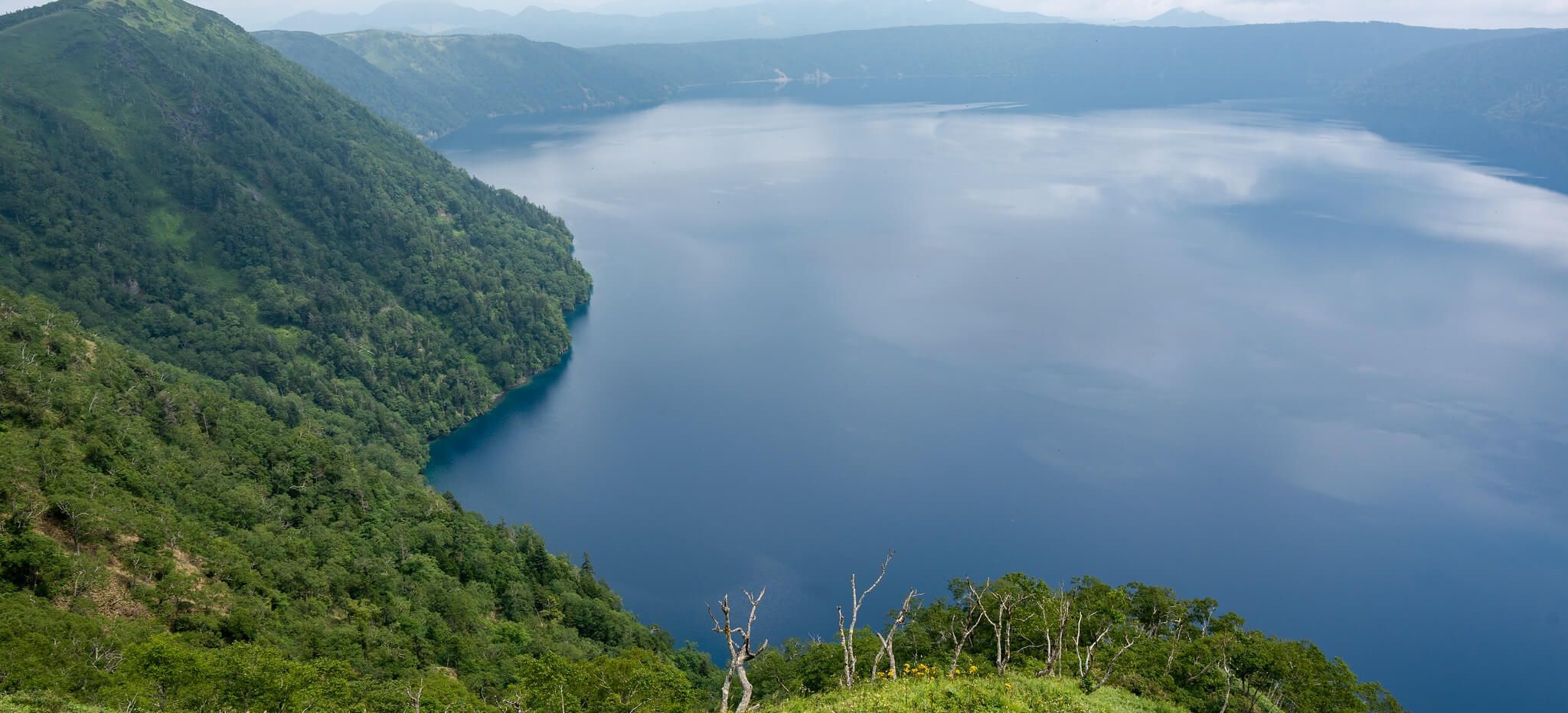
Day 6: Kawayu Onsen
We move into the very heart of Hokkaido on this day as we start a gentle ascent toward the spectacular Lake Mashu. Mashu is often called the clearest lake in the world, and after a hard climb of 550m over 15 km, we get to find out why.
Sitting deep inside steep crater walls that rise over 200 m on all sides, Mashu is an endorheic lake, which means no water flows into it and none flows out. The transparency of its water was measured at an impressive 41.6 meters in 1931, whereas its nearest competitor, Lake Baikal in Central Asia was transparent only to a depth of 40.5 meters, giving Mashu the popular label of the clearest lake in the world. On most days, however, the lake is covered in mist and fog.
From the lake, we continue to ride onward through quiet roads surrounded by tall forests of fir and pine. Along the way, we make a detour to explore a sulfur mine along the route. This adds a unique and educational element to the adventure, allowing us to delve into the historical and geological significance of the area.
We stay for the night at a Ryokan in Kawayu Onsen, renowned for its therapeutic hot springs.


Day 7: Akanko Onsen
Journeying through the challenging terrain of Akan Mashu National Park, the route presents formidable ascents, winding roads, and breathtaking vistas. Commencing at the rejuvenating Kawayu Onsen (130m), the trail follows the scenic shoreline of Lake Kussharo. En route, we stop for lunch at a local soba restaurant. Post-lunch, brace for a uphill ride with a 700-meter elevation gain.
The day’s highlight is Lake Kussharo. A caldero lake formed in a volcanic crater, it is nestled among low, rolling hills and green meadows. Because volcanic gasses are constantly being released into the lake, its water is acidic and supports little vegetation except for a rare species of cicada. Along its banks are located numerous hot springs situated among naturally-heated sands. The Kussharo, which completely freezes over in the winter, is often called the Loch Ness of Japan because of frequent reports of sightings of a lake monster.
The day concludes with a stay at Akanko Onsen, a well-known hot spring resort.

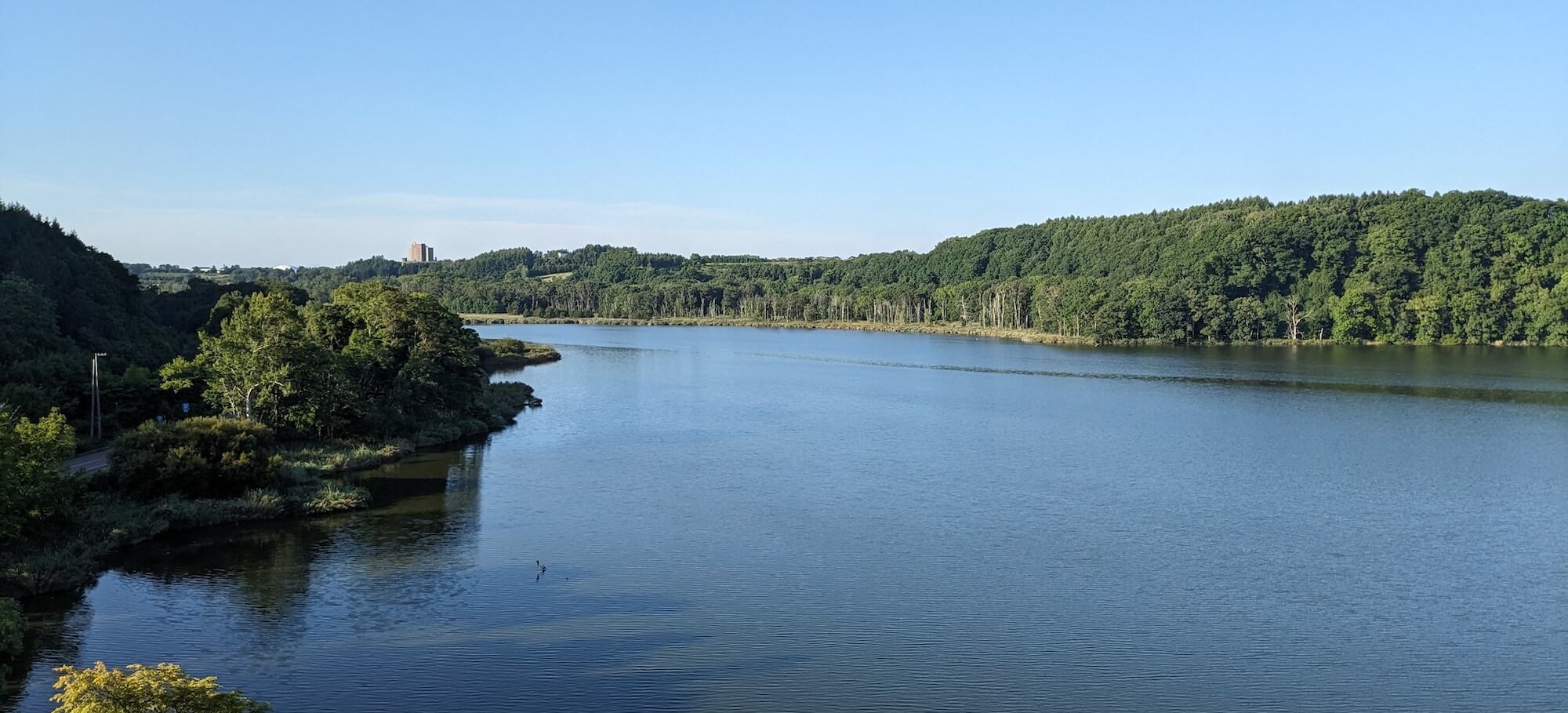
Day 8: Abashiri
On the final day, we visit an exclusive location within the forests surrounding Lake Akan, accessible only to authorized Ainu guides. The Ainu, Japan's indigenous people, have cultivated a distinctive culture deeply intertwined with nature. Here, we gain insights into their unique worldview, a perspective that may evoke a profound appreciation for the natural world. Immerse yourself in an authentic Ainu experience, including the opportunity to play the traditional Ainu instrument called 'mukkuri.' This secluded spot also ranks among the finest locations to witness the vibrant hues of autumn. Subsequently, we transport you to Memanbetsu Airport, approximately a one-hour journey. We aim to arrive at Memanbetsu Airport by noon. Please book your onward flight accordingly.
Ready to plan your adventure? Download a print-ready detailed itinerary.
Map
Accommodation
Each hotel has been thoughtfully selected to ensure an exceptional and memorable experience for guests. Should the listed hotel be unavailable, we will ensure an alternative of similar quality.
Dates and Prices
Single Supplement
From US $500
E-Bike Upgrade
From US $180
Couldn't find a trip with convenient dates?
Open your date as a join-in tour or customize further as a private one.
Essential Info
Inclusions
LODGING
All hotels as mentioned in the tour details or similar (subject to availability).
trip leader
Expert Trip Leader(s) who look after your every need and add meaning to your vacation.
bike
Immaculately maintained bike with helmet, suited to a terrain.
shuttle
A Van support follows the group of riders and carries all belongings.
Airport pickup and drop
Enjoy a hassle-free start and finish to your journey.
meals
Meals as per itinerary. Guests are given the opportunity to dine on their own so that they discover a location independently.
refreshments
Refreshments and mineral water while cycling.
entrance
Entrance fees to most of the monuments and temples.
Exclusions
Beverages
Beverages such as alcohol, tea, coffee, juice at a hotel or restaurant.
Gratuity
Gratuities for your guide team are not included in the trip price.
Bikes
When you have a road and the thrill of a journey ahead of you, it’s imperative to have a good bike to enjoy it. Our fleet majorly consist of the below bikes as a part of this tour. However, sometimes due to height or availability constraints, we may provide a different but similar quality bike.
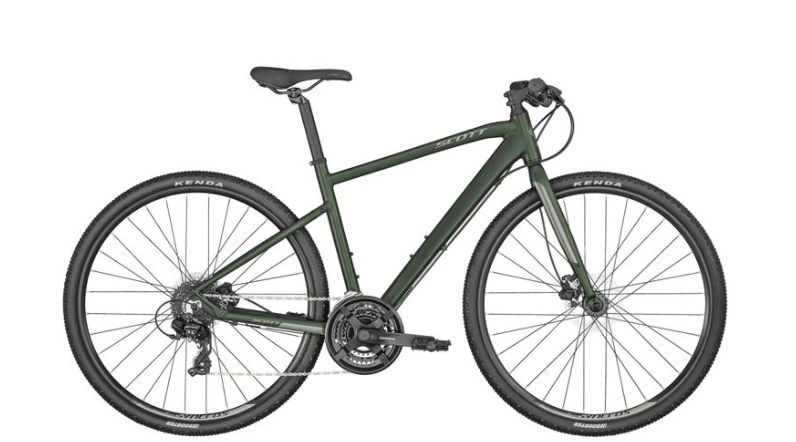
Scott Sub Cross J1 or similar
Included in your trip price
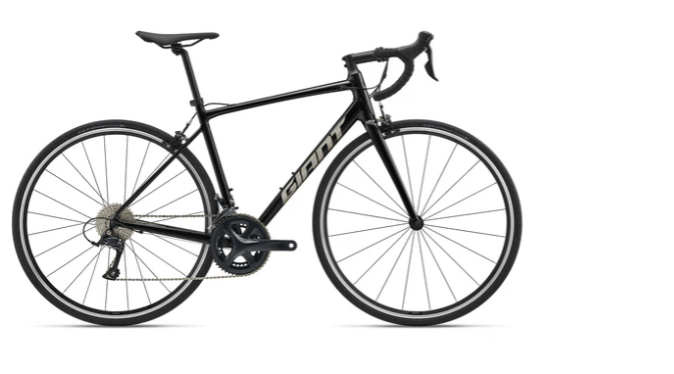
Giant Contend 1 or similar
Included in your trip price
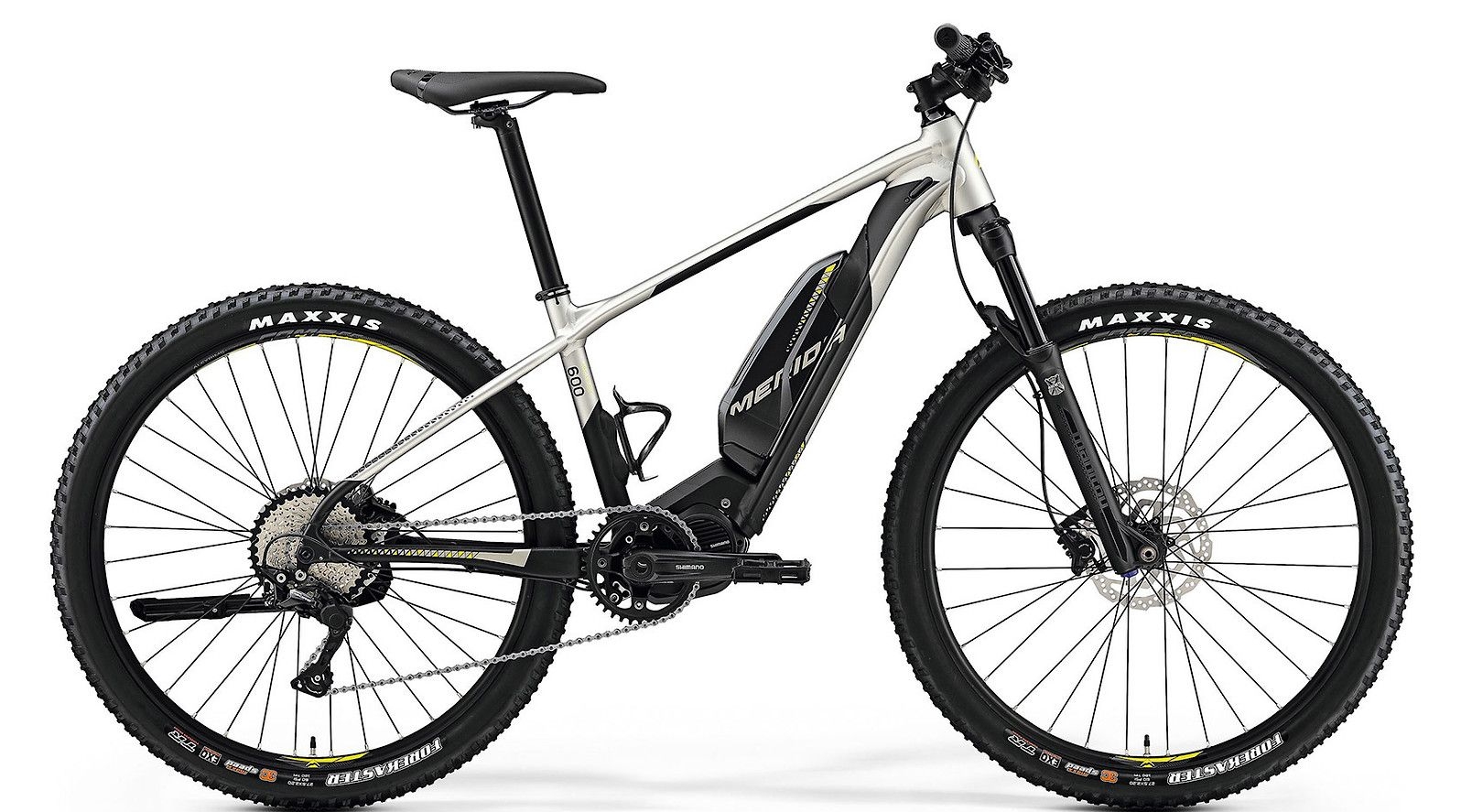
Merida eBig Seven 600 or similar
Available at a surcharge
What to Expect
We want you to have a fantastic experience on your tour, so we aim to be upfront about what to expect along the way. Here are key details to keep in mind:
Accommodation:
Most of the hotels in Japan offer a mix of Japanese inns (Ryokans) and Western-style rooms. It is important to note that room assignments are subject to availability and beyond our control.
Japan is renowned for its rich cultural heritage, and two quintessential elements of this heritage are onsen and ryokans. Onsen refers to natural hot springs, which hold cultural, historical, and spiritual significance for the Japanese people. Ryokans, on the other hand, are traditional Japanese inns that offer a unique and immersive experience into the country's customs and way of life. Together, onsen and ryokans provide travelers with an opportunity to indulge in relaxation, rejuvenation, and a deep connection with Japan's past.
The combination of onsen and ryokans creates a unique travel experience that perfectly encapsulates the essence of Japan. Guests at ryokans often have access to private or communal onsen baths, allowing you to soak in the therapeutic waters while enjoying the surrounding natural beauty.
Japanese-style (Ryokans) rooms offer a unique local experience and are quite popular. They add a distinctive cultural touch to the tour. In Japan, taking public onsen hot spring in the hotel is so popular, so even nice beautiful hotels most time has rooms only with toilet.
Hence, for hotels lacking en suite bathrooms, guests are expected to utilize the communal bathing facilities.
Furthermore, depending on the hotel style, when double rooms are requested, we may only be able to secure twin rooms due to the limited availability of double beds in many Japanese hotels.
Dietary Preferences
While we do our utmost to accommodate all dietary requirements, please note that vegan and gluten-free options can be limited in some regions. We will certainly make every effort to cater to your preferences, but we recommend that guests carry some essential vegan or gluten-free staples as a backup to ensure their needs are fully met. Additionally, we encourage you to inform our guide at the start of the trip; they will be happy to assist you in sourcing suitable supplies from local grocery stores in larger towns whenever possible.
Arrival & Departure Details
Arrival Details:
Travel to the Meeting Point: We will meet at Abashiri Airport (MMB) around 10:00am on the first day. If you wish to stay in Abashiri the night before, we are more than happy to assist you with booking your pre-tour accommodation. If you are flying into Abashiri Airport (MMB) from Tokyo on the first day, please reserve an early morning flight that arrives at MMB before 10:00 am, allowing us to pick you up from the airport on the day. An alternative to flying is to travel by train (Japan Railway, abbr. JR). Upon booking, please let us know your travel plans to Abashiri, and we will confirm in detail where and what time we will meet on the first day. You can see train timetables in English on the Japan Transit Planner website. Regarding the train, we suggest booking tickets no later than a day before. They can be booked in person at the station but we recommend using JR East’s handy online booking engine.
If you plan to arrive a day early, we recommend staying in Abashiri for a night. You can hire a taxi from the airport and reach your hotel. For booking, Rakuten Travel serves as Japan's local OTA and its English booking engine is known for being user-friendly.
Departure Details
Your tour ends in Abashiri. A group transfer to the Memanbetsu Airport is included. The transfer takes around 1 hour. We aim to arrive at Memanbetsu Airport by noon.
Based on this, we recommend the following flight options to Haneda Airport, Tokyo:
NH 4778 – Departs at 13:40 hrs JL 564 – Departs at 15:10 hrs
Please book your onward flight accordingly.
Weather
Mid-June to mid-September are the warm months and most suitable for cycling in Hokkaido. The region we’re cycling on this trip is the coolest in Hokkaido and in all of Japan. It is just pleasant for cycling in Hokkaido as elsewhere is quite hot and humid in these summer months in Japan. The cold season lasts for 3.3 months, from December 10 to March 21.
September to October are the typhoon seasons. In Hokkaido, we rarely get a typhoon, by the time it reaches the north of Japan, the typhoon has lost its power to a degree that it’s no longer a typhoon. Several years ago, a typhoon affected Hokkaido badly in August, it caused flooding in some areas, but an occurrence like that is rare.
January
Offseason
February
Offseason
March
Offseason
April
Good
May
Good
June
Good
July
Best
August
Best
September
Best
October
Good
November
Offseason
December
Offseason
Best
Good
Mixed
Offseason
What to Pack
Packing smart is essential for a safe and enjoyable cycling adventure. From essential biking gear to clothing and travel necessities, this guide ensures you're prepared for any terrain or climate.
Recommended Bicycling Clothes & Gear
- Bicycling shoes or stiff-soled sneakers.
- Padded cycling shorts.
- Short-fingered cycling gloves (personal gloves are ideal).
- Brightly colored cycling jerseys or synthetic T-shirts for visibility.
- Synthetic cycling socks.
- Sunglasses with UV protection.
- Personal helmet (recommended even though provided).
- Personal saddle (optional for added comfort).
- Rain jacket or windbreaker.
- Cycling water bottle (to reduce plastic waste).
Note: Helmets, gloves, and water bottles are personal items, so bringing your own is recommended for maximum comfort and hygiene.
Clothing
- Light, breathable fabrics like cotton or linen.
- Full-sleeved clothing for sun protection.
- Warm layers for chilly mornings and evenings (if traveling in winter).
- Comfortable footwear for non-cycling time.
- Bring a compact rain jacket in case of sudden weather changes.
- Ethnic or modest clothing for exploring towns and temples.
Other Necessities
- Toiletries: Basic hygiene essentials, including insect/mosquito repellent and sunscreen.
- Hand sanitizer and wet wipes.
- Plug socket adaptor.
- Binoculars for wildlife spotting or desert landscapes.
Pro Tips
- Pack light but plan for the varying temperatures: warm days, chilly evenings, and desert winds.
- Use brightly colored clothing for visibility on roads.
- Pack light to leave room for shopping.
Luggage
Please limit your luggage to one medium-sized suitcase and one carry-on bag. Mark your luggage with your name, address, and phone number.
Visa Information
Before venturing on your adventure, make sure you're equipped with essential travel advice, including security updates, local laws, and crucial passport and visa information. Start by visiting the official government website of your home country for accurate and reliable guidance:
- UK Residents: Stay informed by reviewing the Foreign, Commonwealth & Development Office (FCDO) Travel Advice.
- US Residents: Access vital travel tips and updates through the US Department of State Travel Advice.
- Australian Residents: Plan ahead with the latest updates on the Smart Traveller website.
- Canadian Residents: Find comprehensive travel and visa guidance on the Government of Canada's Travel Advice and Advisories.
- New Zealand Residents: Get practical travel advice on the New Zealand SafeTravel website
- Residents of Other Countries: Check with your government or local consulate for tailored travel advice and requirements.
Note: Passport and visa regulations can change at any time. Stay proactive by checking for the latest updates to ensure a smooth and stress-free journey.
Insurance
Medical insurance that covers medical costs in case of an accident during the trip is mandatory to participate in our tours.
We recommend to purchase adequate travel insurance in order to participate in our tours and protect yourself from unforeseen events. Our experience shows that guests who purchase travel insurance—including coverage for all activities on the itinerary, trip cancellation, interruption, delay, baggage damage, loss or theft, personal accident, death and repatriation costs, medical and emergency expenses (including Covid-19), and personal liability—travel with greater peace of mind.
Can I use my credit card insurance?
Yes, as long as it meets our requirements and provides adequate coverage. Ensure you have an emergency contact number and policy number available.
When should I buy travel insurance?
Purchase travel insurance as soon as you've paid in full or booked your flights.
Is proof of travel insurance required?
Yes. You must provide your insurer's name, policy number, and emergency contact via our reservation form. This is mandatory. If you cannot provide proof, you’ll need to purchase insurance before traveling with us.
Does Art of Bicycle Trips sell travel insurance?
We do not sell travel insurance directly, as we believe our customers should have the freedom to choose a policy that best suits their needs. However, we recommend Insured Nomads as a great starting point.
Frequently Asked Questions
The fitness level required for each trip is indicated by the "level" of the tour, which in turn is mentioned on each tour page right next to the price and the trip duration.
Easy: The terrain is mostly flat with a few gentle climbs.
Moderate: The terrain is either mostly flat or consists of rolling hills with a few challenging climbs. There could also be a few days with longer riding distances of up to 75 kms (45 miles)
Difficult: The terrain is mostly hilly with strong elevation gains and/or has long days on the bike. Such trips are recommended for intermediate to advanced cyclists.
Please note that we usually bike around 4-5 hours per day irrespective of the level of the trip.
Yes, please communicate your dietary preferences to your trip leader and they'll ensure that the food you eat is as per your requirements.
Most of this trip is on double-lane paved tarmac roads with very less traffic.
We've designed this itinerary such that most of the cycling happens on quieter countryside roads far from busy traffic. The shuttle transfers on this tour have been strategically planned to bypass busy vehicular traffic.
While your tour price covers most common expenses, a few meals not included in the itinerary may require additional spending. As a general guideline, you can budget approximately US $25 per person per day for these extra expenditures.
Tips are not included in your tour price.
As a general rule, you may tip US$ 15-25 per person per day.
This figure is for the entire crew including the trip leader, the driver, and other support staff.
However, you are not obligated to tip, and you can always tip less or more than the above amount depending on the level of service you received on tour.
It is usually the norm to tip the tour guide, who then distributes the amount among the entire crew. However, you can also tip each individual member of the crew if you so desire.
In case you want to tip the staff at a hotel such as porters, you may pay them US $2-3 per day.
You can exchange currency at the currency exchange kiosks in Japanese airports, or you can use your credit card at ATMs at convenience stores such as 7/11 in major Japanese cities to withdraw JPY. Many Japanese commercial establishments still prefer cash, so its good to have some local currency with you when cycling in Japan.
Yes, you may wear riding shorts while riding your bike. When not cycling, it would be advisable to wear comfortable full-length pants. We recommend keeping a pair of comfortable pants handy in you support van.
When visiting temples and monuments, visitors should wear full-length, loose-fitting pants. Holy places of certain religions may also require covering your head. Your guide will inform of the dress etiquette required for visiting specific religious places.
The meeting time on Day 1 is mentioned in your travel planner shared with you. You can arrive either on the morning of Day 1 depending on the meeting time, or book a pre-tour night to arrive a day earlier.
We don't have anything planned for the last day, so you are free to depart at your discretion.
For answers to broader questions, please visit our Comprehensive FAQs section.
Reviews from our friends
You may also like
End of tours

